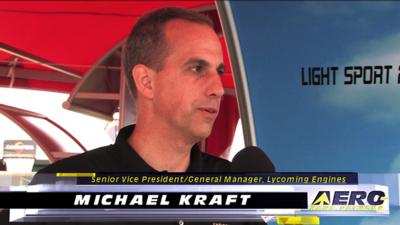Wed, Apr 01, 2015
Lycoming's Latest Innovative Technologies Unveiled In Surprise Announcement
ANN's April 1 "April Fool" Special Edition
Lycoming Engines is set to unveil its newest engine technology to the public today, designated the HHO-360-HCCH.

Driven by years of intensive research, the convergence of several advanced combustion and control technologies already incorporated in other Lycoming product lines, the need to migrate toward more environmentally friendly fuels, and the increased popularity emergence of Experimental aircraft, Lycoming has launched an engine that should start a revolution in the field of light aircraft propulsion and help re-engage people’s interest in aviation.
Not just an engine but also a hybrid electrical engine system, the core of the “engine” consists of a deep-cycle, fully rechargeable and renewable hydrocarbon battery in combination with a sodium ion saturated di-hydrogen monoxide fuel cell.

Work on the project dates back to the early 80s; however, the binary numeric reaction control technologies became feasible only in the last 10 years.
“It’s quite amazing how things can come together in such a short period of time,” stated Michael Kraft, Senior Vice President and General Manager of Lycoming. “Put a few of your brightest engineers in a locked room, take away their Xbox privileges, and slide them pizza under the door… it’s amazing what they can come up with.”

As it is primarily an electric machine, the introductory engine’s base rating is stated as 180 Mhos, with a reciprocal rating that is meeting some resistance in adoption by the regulators. Toxicity tests have been fully completed on the di-hydrogen monoxide fuel cell components, and while long-term corrosion effects are an engineering concern, the low-cost of the fluid is expected to outweigh any downsides. Lycoming is currently patenting the technology and giving credit to its engineering lead, Curley Larryfine. The patent firm of Dewey, Cheetum and Howe may be contacted for licensing arrangements.
More News
Aero Linx: JAARS Nearly 1.5 billion people, using more than 5,500 languages, do not have a full Bible in their first language. Many of these people live in the most remote parts of>[...]
'Airplane Bounced Twice On The Grass Runway, Resulting In The Nose Wheel Separating From The Airplane...' Analysis: The pilot reported, “upon touchdown, the plane jumped back>[...]
"Burt is best known to the public for his historic designs of SpaceShipOne, Voyager, and GlobalFlyer, but for EAA members and aviation aficionados, his unique concepts began more t>[...]
"Polaris Dawn, the first of the program’s three human spaceflight missions, is targeted to launch to orbit no earlier than summer 2024. During the five-day mission, the crew >[...]
There Are SO Many Ways To Get YOUR Aero-News! It’s been a while since we have reminded everyone about all the ways we offer your daily dose of aviation news on-the-go...so he>[...]
 ANN's Daily Aero-Linx (05.04.24)
ANN's Daily Aero-Linx (05.04.24) NTSB Final Report: Quest Aircraft Co Inc Kodiak 100
NTSB Final Report: Quest Aircraft Co Inc Kodiak 100 Aero-News: Quote of the Day (05.04.24)
Aero-News: Quote of the Day (05.04.24) Aero-News: Quote of the Day (05.05.24)
Aero-News: Quote of the Day (05.05.24) Read/Watch/Listen... ANN Does It All
Read/Watch/Listen... ANN Does It All





